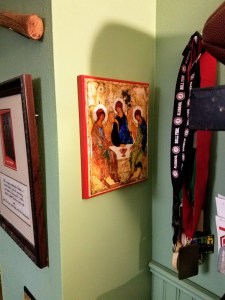I’m posting Pam‘s and my friend Scott Hick’s Facebook post regarding immigration history and some of the racist thought that has often guided these acts here on my blog primarily so I will know where it is for later. I would recommend reading it, liking it, and sharing it over on his Facebook page.
Here are Scott’s words:
Immigration History 101
Many Americans believe in an immigration mythology that you can simply get on a boat or plane and come to America. They think that immigration even today is like Fievel in An American Tail.
I recently talked to a magistrate, which means she has a law degree and is highly educated, and she was dumbfounded to learn that you can’t just get on a plane and come. Her question, “Are you telling me that say, a professional in Finland can’t just decide he wants to come to America and get on a plane and do that?” The answer under our immigration laws is an emphatic NO. So what is our history?
Until the 1880s there were no Federal laws restricting immigration. You really could just get on a boat and go to America.
But in 1882, Congress passed the Chinese Exclusion Act. This law was explicitly based on racism and was designed to stop any new immigration from China.
In 1907, the U.S. had what has been called the Gentleman’s Agreement with Japan which essentially was an agreement by Japan to end immigration to the U.S.
As racism became more and more entrenched in our laws (i.e. Jim Crow), it fed into distrust and hostility to immigrants as well.
In 1924 (which was also one of the high points of KKK activity in the U.S.), the nativists achieved their crowning victory. Congress passed the 1924 Immigration Act. (This followed on the heels of the 1921 Emergency Quota Act) This Act strictly limited immigration. And, it did so on racist grounds. It accomplished its goal by establishing a strict quota, and limited the annual number of immigrants who could be admitted from any country to 2% of the number of people from that country who were already living in the United States as of the 1890 census. In so doing, the Congress was deliberately trying to exclude people they viewed as undesirable. The law was squarely aimed at making immigrants from Southern and Eastern Europe excluded. This hit especially hard at Italians, Slavs and Eastern European Jews. In addition, it severely restricted the immigration of Africans and completely banned the immigration of Arabs and Asians.
According to the U.S. Department of State Office of the Historian the purpose of the act was “to preserve the ideal of American homogeneity”.
These quotas survived until the Immigration Act of 1965. This act did away with some of the worst racist features and instead established a system based on reuniting immigrant families and attracting skilled labor to the United States. However, the system set in place then, which continues to now, still had an annual quota for much of family reunification. (And, the per country limits still apply within these categories, which is why there are extensive waiting lists to legally come even when you have an eligible sponsor) And, by that time, 40 years had passed with no immigration from much of the world. By definition then, there was no one already here from much of the world who could file for family to come and be reunified.
This is why the Diversity Visa Lottery was created. The idea was to allow people to come from countries who traditionally had low numbers of immigrants. So each year, 50,000 of the most educated people in these countries, (a high school degree or equivalent is required, which in much of the world the vast majority of the population could never dream of obtaining that much education) are allowed the chance to file an application to be considered to come.
The current administration wants to abolish much of the 1965 Act on family reunification and also wants to abolish the Diversity Visa. It tells us that this will Make America Great Again.
(I am a lawyer who has focused his practice on immigration law since 1995.)












